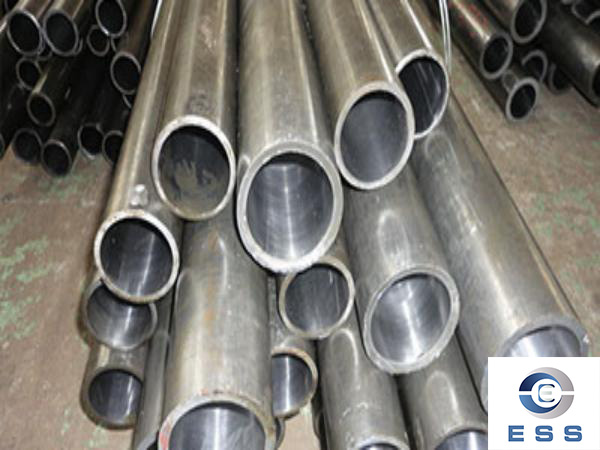What is precision tube?

Precision tube is a steel pipe product with high outer diameter accuracy, wall thickness accuracy, inner diameter accuracy and surface finish. It is generally used in machinery, automobiles, aviation, bearings, instruments and other fields. Precision tubes not only have the characteristics of high precision, wear resistance, good toughness, but also are made of high-quality seamless steel pipes, with good machinability and corrosion resistance.
What is the positive and negative tolerance of precision tube?
The positive and negative tolerances of precision tubes refer to the allowable deviation range of steel pipes. Positive tolerance refers to the upper deviation, and negative tolerance refers to the lower deviation. The positive and negative tolerances of precision steel pipes are generally smaller and require more stringent requirements. Generally speaking, the tolerance of precision tubes can reach 0.02mm-0.05mm, and there are also special requirements for products with positive and negative tolerances of about 0.01mm. Through processing and inspection, it can be guaranteed that the product meets the requirements of high precision.
Definition of outer diameter tolerance of precision tube
The outer diameter tolerance refers to the maximum deviation value allowed for the outer diameter of the pipe within the specified tolerance range. During the production process, different outer diameter tolerance standards are specified according to the application field of precision tubes.
1. DIN 2391-1 standard
DIN 2391-1 is one of the precision seamless steel pipe standards issued by the European Organization for Standardization, which is suitable for manufacturing high-precision, high-finish and high-quality mechanical and automation accessories. Its outer diameter tolerance standards are shown in the following table:
|
Pipe diameter (mm)
|
Tolerance (mm)
|
|
≤40
|
±0.10
|
|
>40~≤80
|
±0.15
|
|
>80~≤120
|
±0.20
|
|
>120~≤180
|
±0.25
|
|
>180~≤250
|
±0.30
|
2. GB/T 3639-2009 standard
GB/T 3639-2009 is a precision seamless steel pipe standard issued by the Chinese Organization for Standardization, which is suitable for machinery manufacturing, automobile manufacturing and other industries. The outer diameter tolerance standards are shown in the following table:
|
Pipe diameter (mm)
|
Tolerance (mm)
|
|
≤30
|
±0.10
|
|
>30~≤50
|
±0.15
|
|
>50~≤80
|
±0.20
|
|
>80~≤120
|
±0.30
|
|
>120~≤180
|
±0.35
|
|
>180~≤250
|
±0.40
|
3. GB/T 8713-2008 standard
GB/T 8713-2008 is a standard for precision seamless steel pipes for automobiles issued by the China Standardization Organization, which is applicable to industries such as automobile manufacturing. The outer diameter tolerance standard is shown in the following table:
|
Pipe diameter (mm)
|
Tolerance (mm)
|
|
≤16
|
±0.10
|
|
>16~≤30
|
±0.15
|
|
>30~≤50
|
±0.20
|
|
>50~≤80
|
±0.30
|
|
>80~≤120
|
±0.40
|
Advantages of precision tubes
1. High precision: High outer diameter accuracy, wall thickness accuracy, inner diameter accuracy, and surface finish.
2. Stable performance: Due to the high quality of the material and the high-precision cold drawing process, the performance of the steel pipe is stable and reliable.
3. Good processability: The standard precision size of the precision steel pipe can meet the standard requirements, and it is relatively easy to process.
4. Good wear resistance: After cold drawing, the metal grains on the surface of the precision steel pipe will be refined, the strength will be improved, and the wear resistance will be enhanced.
In summary, the positive and negative tolerances of precision tubes are generally small, and the requirements are more stringent. We can understand the relevant standards and parameters of the outer diameter tolerance of precision seamless pipes. When choosing precision seamless pipes, it is necessary to select appropriate sizes and tolerance standards according to actual needs to ensure the quality and precision of the pipes. Through processing and inspection, it can be ensured that the products meet the requirements of high precision. Precision tubes have the advantages of high precision, stable performance, good processability, good wear resistance, etc., and are widely used in machinery, automobiles, aviation, bearings, instruments and other fields.
Read more: Difference between seamless pipe and seam pipe













 Eastern Steel Manufacturing Co.,Ltd not only improve product production and sales services, but also provide additional value-added services. As long as you need, we can complete your specific needs together.
Eastern Steel Manufacturing Co.,Ltd not only improve product production and sales services, but also provide additional value-added services. As long as you need, we can complete your specific needs together.










